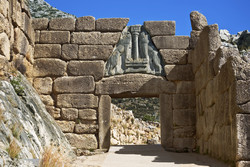Function of Mycenaean towns
Mycenaean civilisation flourished in Greece during the Bronze Age from 1600 to 1100 BCE, before its collapse. Archaeologically, the exact function of certain Mycenaean buildings remains undetermined. Researchers investigated the phenomenon through work on the EU-funded project IISEMG (Investigating intermediate structures in the economy of Mycenaean Greece (c. 1400 - 1200 BC) through archaeological and textual data). The goal was to resolve questions concerning the nature and role of two Mycenaean settlements. Specifically, research addressed the socioeconomic role of certain buildings and whether the towns were palatial organisms. The study combined textual sources with archaeological evidence, and ran from October 2012 to December 2014. Team members addressed the economic complexity and organisation of Mycenaean society. They established criteria to identify archaeological indicators, which were used to compare various types of storage from different buildings in the two sites of Mycenae and Thebes. Hence, the research established the types and probable functions of the excavated buildings, particularly differentiating households from palatial structures. The study concluded that the two sites were similarly organised, both having various multi-storage and administrative structures. In both cases, the main activities concerned food storage, preparation and consumption, hoarding weapons and some level of palatial craft production (including textiles). Palatial interests appear to have been present in most excavated structures, both internal and external. As such, both sites should be considered ‘palace towns’. The IISEMG project contributed to a better understanding of Mycenaean society and economy. The work stimulated dialogue with researchers studying comparable societies further afield.
Keywords
Mycenaean, settlements, palace, economy, administration, archaeological indicators

